Site menu:
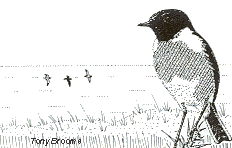
March 2008 Newsletter
Ten Years of deeestuary.
Highlights - March 07 to Feb 08.
Neston Reedbed Voluntary Wardens.
February Bird News.
Forthcoming Events.
Latest Newsletter.
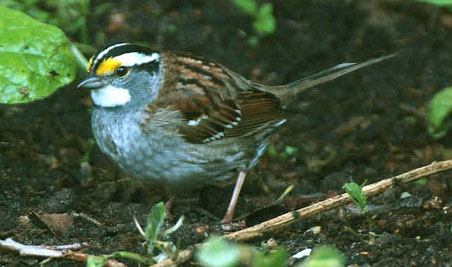
This little beauty was undoubtedly my star bird of the past ten years. There can't be many birders in this country who have had such a mega rare bird in their front porch, or had a large twitch in their own garden!
Yes, the website is ten years old this month. To mark the occasion I have given the website a new look but the main content is much the same. A major change is an updated photograph gallery. One of the biggest changes over these past ten years has been the rapid advances in digital photography and the establishment of digiscoping. Ten years ago I had great difficulty obtaining any decent photographs of estuary birds, now I'm sent absolutely fabulous photos almost on a daily basis, all of birds on or near the estuary and these include the latest rarities virtually as soon as they appear. Many people have sent me photographs over the years and all the regular contributors have photos included in the new gallery. But I want to thank three people in particular: firstly Valerie McFarland who ten years ago let me choose from her large collection of slides of birds and scenes of the Dee Estuary - without which I would have had hardly any suitable photographs at all when the website first started. Secondly is Steve Round. Several years ago I was looking for a photo of a Little Egret and by chance I came across a great photo of one by Steve, taken on the Dee marshes. He let me use the photo without hesitation and has very generously let me use his photos ever since. Anybody who looks at this website on a regular basis will know just how stunning his photos are and as you would expect he features very much in the new gallery. Take a look at Steve's Website - http://stevenround-birdphotography.com/. Thirdly is Richard Steel who like Steve takes stunning photographs, not just of rarities but of all the birds found on and around the estuary. In the past few years Richard has sent me a selection of his best photos on a weekly, sometimes daily, basis; my only regret is that due to lack of space I have not been able to use them all! His photo of three Bar-tailed Godwits each in a different state of winter/breeding plumage remains one of my favourites; it is in the gallery, of course. I finish on the subject of photos by showing an example of Steve Round's work: an unbelievably good photo of a Leach's Petrel. I hope you will forgive my indulging myself by also showing one of my own photos, I particularly like the composition of the three waders.
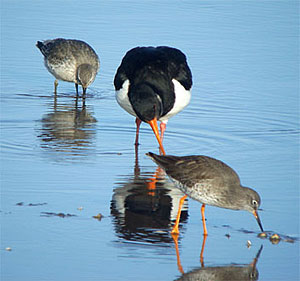 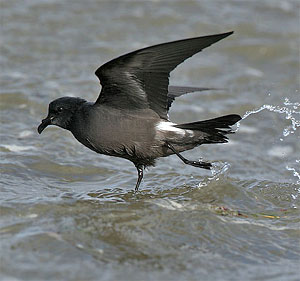 |
Whilst on the subject of acknowledgments I want to thank Tony Broome for letting me use his excellent bird sketches, a god send in the early days when I had so few photos, and as you will see above I still use them! Although everyone who has sent me bird news, photographs and sketches has contributed to this website, without which it wouldn't exist, there are three people I would like to mention who have contributed more than anyone else from day one and still contribute today. Two of them have even let me put whole Bird Reports on the Website - Hoylake Bird Observatory Report 2000/01 and the Dee Estuary Voluntary Wardens Report 2001 which covers West Kirby and Red Rocks. Anyway, thanks to Chris Butterworth, Jane Turner and Steve Williams who all have contributed articles, photos, sketches and a never ending supply of bird news! Also a big thank you to everyone else who has contributed in any way, one of the pleasures of running this website over these past ten years has not only been getting to know the birds but also my fellow birdwatchers, birders and twitchers!
One of the things about the website which has pleased me most is that I've had no trouble finding articles for the monthly newsletters. Articles written by people other than myself have always been very welcome, I've been lucky in being able to publish the bird reports mentioned above and fascinating articles such as Steve William's and Bob Anderson's 50th Anniversary of the Hilbre Bird Observatory published last month. But the majority of articles have been written by myself and it's very pleasing to look back at them and, though I say it myself, still find them interesting and informative. A full list of articles is given in the Site Index, but here is a list of my ten favourites, in my opinion well worth a second look:
-
Heswall Shore Site guide, Nov 98. This was one of the first articles I wrote and it was not only published on this website but also the Cheshire & Wirral Bird News and the Birdwatcher's Diary. For a more up-to-date guide see Heswall and Thurstaston Site Guide, Aug 07.
-
Golden Age for Raptors, Jul 03, also see Golden Age for Raptors Part 2, Nov 06.
Richard Smith
Highlights - March 2007 to February 2008
The spring migration in March was fairly unremarkable, with the first migrants earlier than the past couple of years and then the rest held up by northerly winds, but by April things were hotting up and included some excellent rarities - more of which below. Ring Ouzels were much in evidence with a total of 21 when we would normally expect just a handful, it was also a good spring for Tree Pipits, at least 50, and there were a lot of Grasshopper Warblers passing through, most of which seemed to be in a bramble thicket next to Leasowe Lighthouse! Good though the spring migration was the autumn migration was better. There was another great clutch of rarities and also a remarkable passage of birds on Oct 15th with 10,000 or so Chaffinches, 524 Siskin and 87 Brambling past Red Rocks. A very late Swallow on December 11th was the last migrant recorded and the latest ever for Wirral.
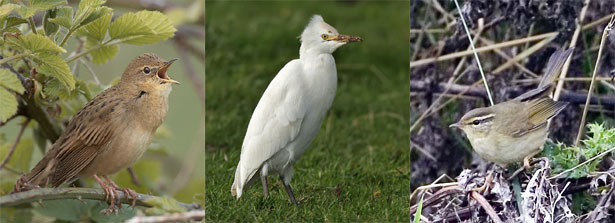
The last 12 months have been particularly good for rare
birds including five new to the area. Here is a list of the ten most
interesting
records, those with an asterisk are the new ones: White-tailed Eagle (April),
Black Kite (* April), Red-breasted Flycatcher (April, May and October), Great
White Egret (May, June, October, January and February), Red-backed Shrike (June), Common Rosefinch (* July and October), Pacific Swift
(* September), Radde's Warbler (* October), Blyth's Reed Warbler (* October),
Cattle Egret (January and February). I should add that at the time of writing I do not know
how many of these birds have been/will be accepted by the relevant rarity committee.
Sea watching started off in March with some early Gannets on the 5th. Two Leach's Petrels during westerly gales mid-month were more unexpected. The Little Gull spring passage peaked at 217 in April. By July we were well into a bad summer of wind and rain but it did result in several Storm Petrels going past. It was a particularly good summer for Arctic Skuas with birds being seen almost daily; max daily count was 18 off Hilbre. A Pomarine Skua turned up off North Wirral mid-July and stayed almost four weeks. We had some very good passages of Manx Shearwaters with 680 counted in just 45 minutes in August the peak count. Strong winds in August also blew in a record 42 Storm Petrels in just one day past Hilbre. September brought in 21 Shags to Hilbre, also Grey Phalaropes, a Sabine's Gull and 16 Leach's Petrels. More Skuas turned up during November gales - Arctic, Pomarine and Great - as well as seven Leach's Petrels. A Little Auk was seen well on a very still day after the gales. A pair of Long-tailed Ducks spent several days on the sea near Hilbre in December. An unexpected Arctic Skua was observed from West Kirby in January, 274 Great Crested Grebe were off the North Wirral coast in February.
A Montague's Harrier was a good record during the spring migration in April. This past winter has seen two Marsh Harriers over wintering on the marshes for the first time, but Hen Harriers have dropped to two from the five present a couple of years ago. A Kettle of 26 Common Buzzards over the Hoylake Langfields was a spectacular sight on September 6th, the highest ever single count for Cheshire and Wirral.
Whooper swans continue to increase with a report of 61 on Shotwick Fields in January a record high for the area. Brent Geese reached a peak of 172 in January, a big increase on the previous highest number of 110 two years ago. Ten years ago the maximum number of Little Egrets was just four, in August 2007 they reached 204, a remarkable increase!
Voluntary Wardens Needed to Protect Neston Reed Bed

Once again the RSPB are organising voluntary wardening at Neston Reed Bed, the scheme will begin March 20th and run through until the end of May. Wardening will take place each evening in order to protect this important habitat from disturbance. I know in the past this scheme has attracted birders who have realised what a good opportunity this location is for some serious birdwatching with the possibility of seeing migrating Ospreys and Marsh Harriers, large numbers of Little Egrets flying in to roost, Bearded Tits, Hen Harriers, Short-eared Owls and the numerous birds which breed in the reed bed. If you are interested please contact Stuart Taylor (Stuart.Taylor@rspb.org.uk) or Geoff Robinson (Geoffrey.Robinson@rspb.org.uk), telephone 0151 336 7681.
February Bird News
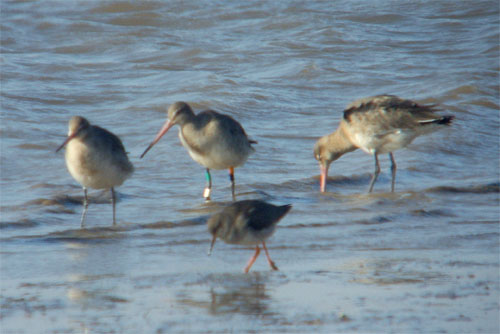
Black-tailed Godwits and a Redshank, Thurstaston Shore Feb 18th, © Richard Smith.
I don't know about you lot out there but I'm glad this winter is coming to an end - I just don't like this mild, wet and windy weather. Apart from being unpleasant to be out in it also suppresses bird numbers, in particular waders. Mind you, there were a few really nice days this February and I spent three lovely sunny days down on Heswall/Thurstaston Shore watching over 1,000 Black-tailed Godwits feeding busily just a few feet from where I was standing on the beach. Four of us recorded a total of 16 colour ringed birds which is a good percentage. Many of these same birds have already been seen at this location this winter, in November and December. But in January there appears to have been a mass exodus from the Dee to Marshside RSPB (Southport) where there was a remarkable total of 4,000. Many birds then appeared to have returned to the Dee Estuary in February. For example the bird in the above photo (ON-G//W) was recorded at Thurstaston on 12/11 and 22/12, at Marshside on 24/1 and 25/1, then at Thurstaston again on 18/2 and 19/2. I wonder what drove these movements?

Left - A mixture of roosting waders at Inner Marsh Farm on Feb 6th, Black-tailed Godwits, Lapwing and Knot (Richard Smith).
As for last month the birds of the month were egrets, with the single Great White Egret present off Neston Reed Bed and Parkgate on the 1st and 2nd, and what was presumably the same Cattle Egret as last month reappeared at Ness on the 24th. We suspect it has been either in fields out of sight of public roads, or maybe out on Burton Marsh. Most likely it is still around somewhere. A Cetti's Warbler heard singing at Neston Old Quay on the 17th was a good find, one of three Chiffchaffs there was a possible Siberian.
One to two Snow Buntings frequented either Little Eye or West Kirby Shore all month, with three at Hoylake on the 8th possibly being different birds, one was also at Gronant on the 19th. Two Corn Buntings were on Heswall Fields on the 2nd. Two Marsh Harriers have been observed on the marshes but a single Hen Harrier was reported only once this month. Although the tide almost covered the marsh at Heswall during the spring tides it produced very little apart from the usual Peregrines and Merlins, and a single Water Rail. There were a total of only three reports of single Short-eared Owls through the whole month.
Apart from the Black-tailed Godwits already mentioned waders have included five Avocets at Connah's Quay where there have also been two Greenshank and three Spotted Redshank. Seven Spotted Redshanks were noted at Inner Marsh Farm early in the month. 310 Sanderling was the max count at Hoylake where Knot and Dunlin numbers remain low. 14 Purple Sandpipers on the ramp at New Brighton Marine Lake during a windy high tide on 23rd was a good number for this location.
Out to sea 274 Great Crested Grebes were off Meols Shore on a rare windless day on 11th, and four Gannets seen off Hilbre on 26th were the first of the year. Numbers of Brent Geese on Hilbre have remained high with a max count of around 140. A single Goosander drake flew past West Kirby Shore on 7th.
What to expect in March
March is one of the most exciting months of the year with the return of the first spring migrants. The Wheatear is a bird every birder looks forward to as the harbinger of spring, once the first one comes the rest just keep on coming. Below is a table of the first birds seen over the past three years for some of the commoner migrants. It's always nice to know when the first of each species arrives so please send me an if you see an early migrant and I'll put it in the latest sightings page.
| Species | 2007 | Location (07) | 2006 | 2005 |
|---|---|---|---|---|
| Wheatear | 12th March | Leasowe | 23rd March | 16th March |
| White Wagtail | 13th March | Hilbre | 19th March | 17th March |
| Sand Martin | 15th March | Hilbre | 26th March | 17th March |
| Swallow | 16th March | Inner Marsh Farm | 25th March | 25th March |
| House Martin | 1st April | Leasowe | 29th March | 2nd April |
| Willow Warbler | 3rd April | West Kirby | 31st March | 31st March |
| Whitethroat | 15th April | West Kirby | 17th April | 18th April |
| Cuckoo | 15th April | Red Rocks | 29th April | 1st May |
| Swift | 16th April | Neston | 16th April | 17th April |
Migrants will also be out to sea and we should have Gannets and the first Sandwich Terns of the year. Look out also for Little Gulls which should be coming past Hilbre in good numbers by the end of March, most Little Gulls winter to the south of this country, migrate up the Irish Sea then cross the country from Crosby to the North East before making their way to breed around the Baltic.
March is often a good month for big high tides and, as you can see below, we have two 10m tides due. Lets hope for a strong west/south west wind to bring the sea over the marsh, this can be spectacular in early March with Short-eared Owls, Water Rails, Jack Snipe, plenty of waders and wildfowl plus various rodents washed in by the tide.
Forthcoming Events
March Highest Spring Tides (Liverpool)
Also see
Tides page.
8th March, 11.44hrs (GMT), 9.8m.
9th March, 12.20hrs (GMT), 10.0m.
10th March, 12.58hrs (GMT), 10.0m.
11th March, 13.36hrs (GMT), 9.8m.
Forthcoming Events
Organised by the
Wirral Ranger Service ,
Flintshire Countryside Service and/or the RSPB:
All these events and walks have bird interest, even those not advertised
specifically for birdwatching. No need to book for these events unless
specified - please check below. The Wirral Parks and Countryside
Newsletter which contains events and activities from October 2007 to March
2008 can now be downloaded -
click here
(this is a 3mb PDF file).
Sunday 2nd, March. 6.30am – 9.30am.
Mad March Hares.
Join the Wirral Country Park Rangers on their annual walk to search for
Brown Hares boxing on the fields surrounding the Wirral Way. Watch the
males vie for female attention and the ….This event is suitable for the
whole family to enjoy. Note that this walk is always also good for birds.
Sorry no dogs.
Booking essential 0151 648 4371/3884
Sunday 9th March.
Open Day on the
Connah's Quay Reserve - 10am to 3pm.
An opportunity to see this great little reserve, usually open only to
members of the Deeside Naturalists' Society, see their
website for details and
directions. The West hide over looks the adjacent RSPB reserve at Oakenholt Marsh.
At high tide the birdwatching from here is spectacular as the wader
flocks gather to roost on the marsh. High tide at 1220 hrs, height 10.0m.
Monday 10th, March 11.30 am, Parkgate
Birdwatch.
High tide at Parkgate is the best time to discover the hidden treasures of
the Dee Estuary RSPB reserve. If the tide reaches the wall, small mammals
such as voles, shrews and possibly water rails are flushed out. Meet at
the Old Baths car park overlooking the Dee Estuary Reserve at Parkgate,
close to The Boat House pub (HW 12.58 10.0m). For details contact the RSPB
on 0151 336 7681. No need to book.
Thursday 20th, March 11am – 3pm, North Wirral Coastal
Park Task Day.
Join the Rangers and members of the Friends of North Wirral Coastal Park
and undertake a day of conservation work to improve the habitats along
Wirral’s coast.
Booking essential 0151 678 5488
Sunday
23rd, March 4.30pm, Parkgate Raptor Watch.
Watch the elegant hen harriers come in to roost on the RSPB reserve at
Parkgate. Other birds we hope to see include merlin, peregrine,
sparrowhawk, short-eared owl and barn owl. Meet at the Old Baths car park,
which overlooks the Dee Estuary RSPB reserve at Parkgate, close to the
Boathouse pub.
Monday
7th, April 11.30am, Parkgate
Birdwatch.
High tide at Parkgate is the best time to discover the hidden treasures of
RSPB Dee Estuary reserve. If the tide reaches the wall, small mammals such
as voles, shrews and possibly water rails are flushed out. Meet at the Old
Baths car park overlooking the Dee Estuary Reserve at Parkgate, close to
The Boathouse pub (HW 12.55 10.1m).
For details contact the RSPB on 0151 336 7681. No need to book.
Tuesday
8th, April 12.00, Parkgate
Birdwatch.
Another chance to learn about the birdlife of this important saltmarsh
reserve. If the tide is high enough flocks of waders will be joined by
raptors such as peregrines, hen harriers and short-eared owls. (HW 13.36,
10.0m). For details contact the RSPB on 0151 336 7681.
|
 |
The blank (UK) Birding Webring is a collection of quality birding web sites that are based in the United Kingdom. Visit the webring homepage for more information, or A complete list of all the sites in the webring is available by clicking here. previous site in ring : random site in ring : next site in ring |